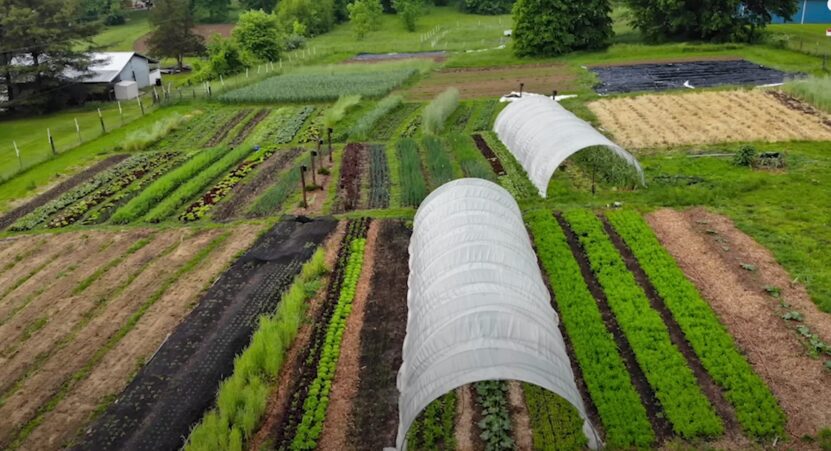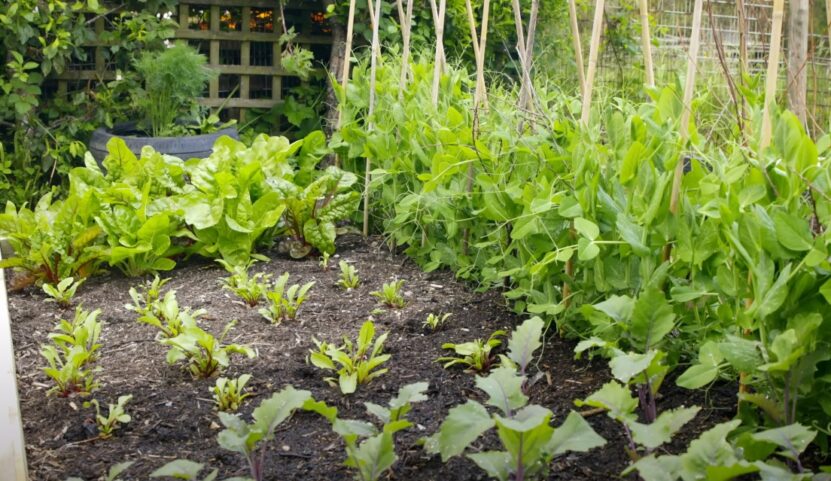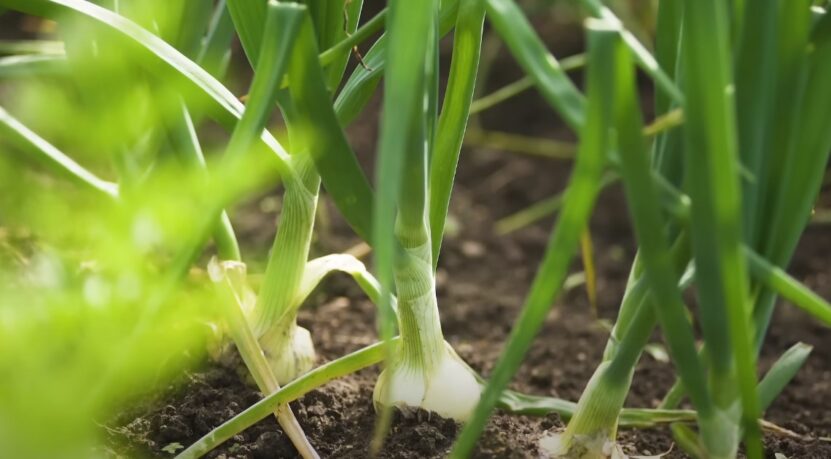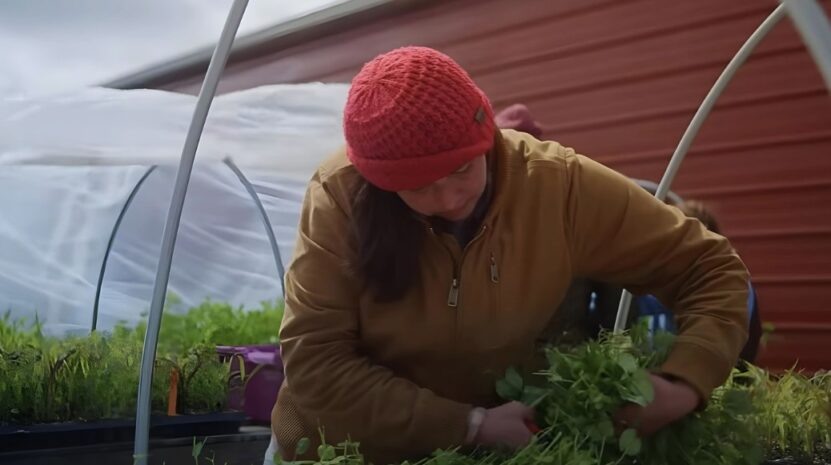Gardening is one of my favorite hobbies, and crop rotation is very important to know. Not only does it work wonders for keeping your soil healthy, but it also helps you keep those pesky bugs and diseases at bay. And the best part? You’ll see a serious boost in your overall yields.
Now, I’ve been into gardening for a while, so let me share some of the practical tips and insights I’ve picked up over the years. I’m happy to walk you through the ins and outs of crop rotation and help you get the most out of your garden. Let’s get right into it.
Rotation Plan
Three-Year and Four-Year Rotations
A common approach is the three-year rotation:
- Year 1: Leafy greens (lettuce, spinach)
- Year 2: Root vegetables (carrots, beets)
- Year 3: Fruit-bearing plants (tomatoes, peppers)
For a more robust plan, consider a four-year rotation:
- Year 1: Legumes (peas, beans)
- Year 2: Leafy greens (lettuce, kale)
- Year 3: Root vegetables (potatoes, radishes)
- Year 4: Fruit-bearing plants (squash, cucumbers)
Rotating by Plant Families
Different plant families should be rotated to manage specific pests and diseases effectively. Here’s a breakdown:
- Nightshades (Solanaceae): Tomatoes, peppers, eggplants
- Legumes (Fabaceae): Peas, beans
- Brassicas (Brassicaceae): Cabbage, broccoli, kale
- Cucurbits (Cucurbitaceae): Cucumbers, squash, pumpkins
- Umbellifers (Apiaceae): Carrots, parsley, dill
- Alliums (Amaryllidaceae): Onions, garlic, leeks
Garden Layouts and Rotation
Crop rotation is versatile, fitting various garden setups:
- In-ground beds: Traditional gardens benefit from detailed rotation plans.
- Raised beds: Easier management and zoning make rotation straightforward.
- Container gardens: Even small spaces can rotate crops by moving pots around or changing the planting sequence.
Extended Rotations
The typical 3-4 year crop rotation is pretty common, but if you really want to get serious about managing pests and diseases, extending that out to a 5 or 6 year rotation can make a huge difference.
It might take a bit more planning, but it’s totally worth it to see those pest and disease issues just about disappear. That extra time between planting the same crops really seems to break the cycle for a lot of those problem critters and pathogens. Give it a shot, I guarantee it will work wonders for your garden.
Crop Rotation Is of the Essence

Healthier Soil, Happier Plants
Different plants have all kinds of unique nutrient requirements. Tomatoes, for example, are in huge need of nitrogen, while root veggies like carrots crave more phosphorus.
But the cool thing is, if you rotate your crops, you can balance out that nutrient draw from the soil, so you don’t end up totally depleting it. Plus, it helps build up a way richer and more diverse community of little microbes in the soil. It’s a win-win situation.
Natural Pest and Disease Control
Those pesky pests and diseases tend to really zero in on certain plant families, don’t they? But rotating your crops around is a neat little trick that can pull the carpet underneath them. Why, you ask? This process throws off their whole lifecycle.
Without a steady supply of their favorite host plants, those critters have a hard time getting a foothold. And that means you can cut back on having to bust out the chemicals to deal with them.
Boosting Soil Fertility
Certain crops, especially peas and beans, can actually pull nitrogen right out of the air and deposit it into the soil, which is pretty handy. If you mix those nitrogen-fixing plants into your crop rotation, it’s an easy way to naturally enrich your soil. And on top of that, root veggies can help loosen up compacted dirt just by doing their thing down in the ground.
Weed Management with Smother Crops
When it comes to weeding, I’ve found that planting “smother crops” can really benefit me and my garden. These crops hog all the sunlight and nutrients, leaving the weeds high and dry.
It’s like they’re competing for the good stuff, and the weeds just can’t keep up. Working these smother crops into your garden rotation lets you really cut down on the need for all that manual weeding or using those herbicides.
Integrating Companion Planting and Cover Crops

Companion Planting
Pairing certain plants together can enhance growth and pest resistance. For instance, planting basil with tomatoes not only improves flavor but also repels pests.
Cover Crops
Between main crops, sowing cover crops like clover or rye can improve soil fertility and structure. These crops protect the soil from erosion and add organic matter when turned under.
Record Keeping and Planning
Detailed Records
Keep a journal of past plantings, noting any pest or disease issues. This information is invaluable for planning future rotations. Tracking soil health and amendments also helps refine your rotation strategy.
Managing Garden Space
Strategically dividing garden space into zones or sections simplifies rotation. Raised beds can be labeled and rotated systematically, ensuring every crop gets its turn in the spotlight.
Adapting to Your Garden
Crop rotation isn’t one-size-fits-all. Tailor your plan based on your garden’s size, local climate, and specific goals. For example, in a small urban garden, containers might be your best bet, allowing flexible rotation.
Perennial Plants and Crop Rotation

Perennials like rhubarb, asparagus, and berry bushes don’t need to be rotated. These plants can remain in the same spot for years, providing a stable framework around which to plan your annual crop rotations.
Simplifying the Process
Raised Beds and Zoning
Using raised beds makes managing crop rotation more straightforward. You can designate each bed for a specific plant family and rotate them systematically.
Combining with Other Organic Methods
Crop rotation shines brightest when combined with other organic practices. Companion planting, mulching, and proper plant spacing all work together to create a resilient garden ecosystem.
Related Posts:
- How to Construct a Root Cellar in Your Backyard -…
- 24 Hottest Fire Pit Ideas and Designs 2023 - Heat In…
- How to Start Your Backyard Permaculture Garden Today
- Easy DIY Raised Garden Beds for Beginners
- How to Plan and Start a Community Garden - Tips for Success
- Sustainable Building Materials for Your Eco-Friendly Home








